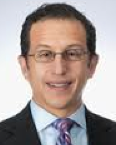The chief operating officer of the firm that operates the nation’s longest-standing public stock market and the head of U.S. equities at the firm that operates the nation’s largest dark pool found themselves in agreement Monday on one thing:
A pilot test for a revised form of a “trade at rule” that would require an order be routed to the best price on public markets, unless the alternate venue is holding and has posted a limit order at that best price.


Larry Leibowitz, chief operating officer of NYSE Euronext, proposed that exchanges cut their access fees in half or more to make a modified trade-at rule work. In response to a question from Rep. Carolyn B. Maloney of the House Financial Services Committee, Leibowitz said exchanges and alternative trading systems would also need to stay inside the best bid or offer on a stock, unless the venue could “improve on size or price” of a quote already displayed on public markets.
He also recommended that a test require at least a penny improvement in the price.
“I’m going to surprise everyone by agreeing with Larry,’’ said Mathisson, a managing director at the Credit Suisse Group, which operates Crossfinder, the largest alternative to the New York Stock Exchange among venues where the identities of buyers and sellers are not disclosed.
If exchanges brought the maximum fees charged for access to their trading systems down to 2 cents per 100 shares or the “low single digits” from their current 30 cents per 100 shares, “a system could start to work,’’ Mathisson said.
At 30 cents, not enough profit is left in a decimal world, where there is only $1 of spread per 100 shares, he indicated.
But the proposal would also need reactivation of the “alternative display facility” once operated by the Financial Industry Regulatory Authority, Mathisson said at an equities market structure roundtable organized by New Jersey Rep. Scott Garrett at Federal Plaza in lower Manhattan Monday.
That facility allowed alternative trading venues to post bids and offers directly to the consolidate tape of quotes used by exchanges to establish prices on securities, Mathisson said.
That would let ATS’s avoid paying fees for posting quotes to markets run by national exchange operators, he said.
If that facility were ‘back up and running and access fees were brought down to a de minimis level, then you potentially could have a trade-at rule,’’ Mathisson said.
Putting in place a trade-at rule, which the Securities and Exchange Commission was promoting as recently as 2011, could actually result in “less order flow” for exchanges, Leibowitz said. But it would be “better quality” flow, he said.
Rep. Maloney, in both of the first two sessions of the roundtable, inquired about the amount of orders moving onto unlit exchanges, from public exchanges. Roughly 35 percent of all equities trading this year has taken place in dark pools, brokers’ internal pools of orders and other alternative trading systems, where prices are not displayed publicly until after a trade is made.
A trade-at rule could result in a much higher number of orders sent to public markets. That in turn would result in many more limit orders getting filled, which would support the SEC’s long-term goal of encouraging traders to post limit orders on public books.
The SEC promoted the idea of a trade-at rule in 2011, but never formally proposed one.
Leibowitz said NYSE Euronext this year is promoting discussion of the idea, across the industry, but a “proposal is a long way off.’’
After their exchange on the Garrett panel, Leibowitz said a deal was “done” if dark pool operators such as Credit Suisse would be happy with a 20-cents-a-hundred access fee.
But Mathisson said the fee had to be 5-cents or less to make the economics work.
A pilot does exist already, though, said Gary Katz, President and Chief Executive Officer of International Securities Exchange. The pilot is the options exchange, which does not differentiate between professional orders and retail orders.
As regulation stands now in equities, “all the retail flow is being removed from the lit market,” Katz said.
And this is “causing a fragility” in capital markets, he said, since other products such as options are derivative instruments whose prices rely on the prices of stocks to be sound.




